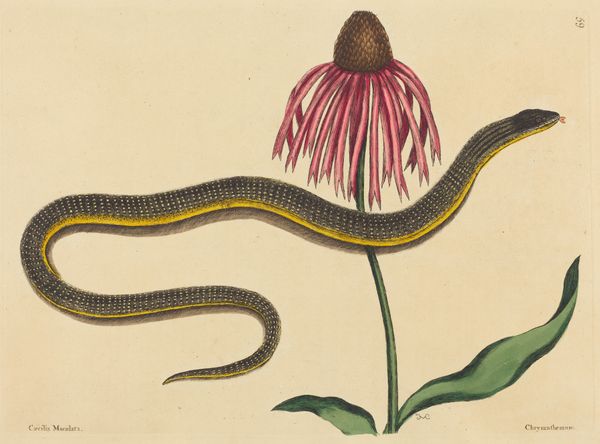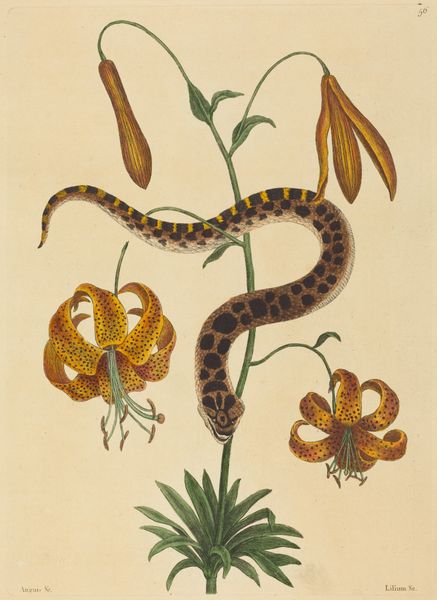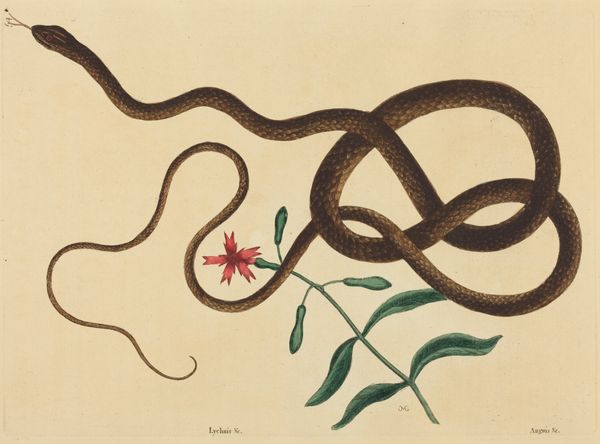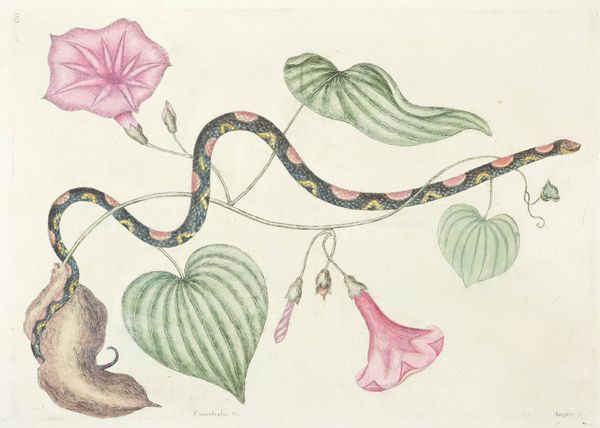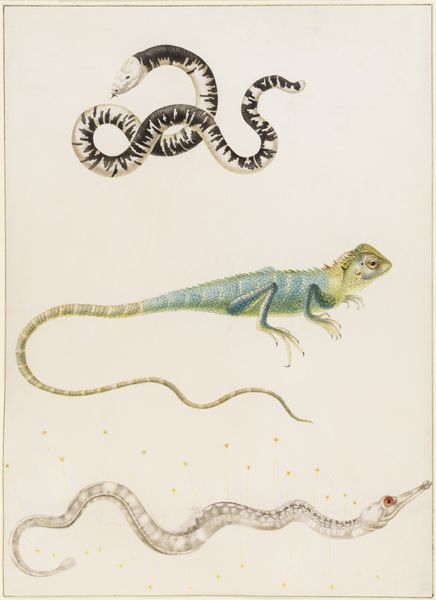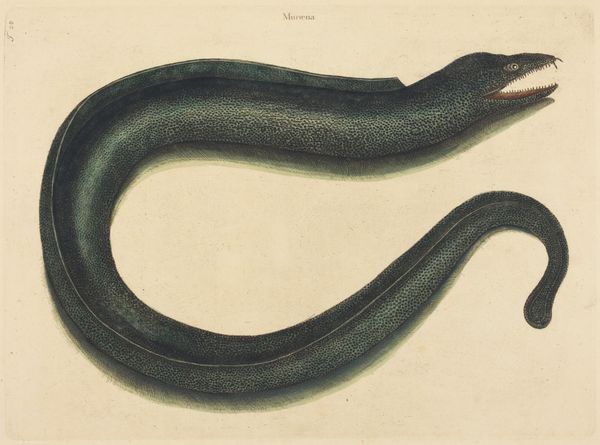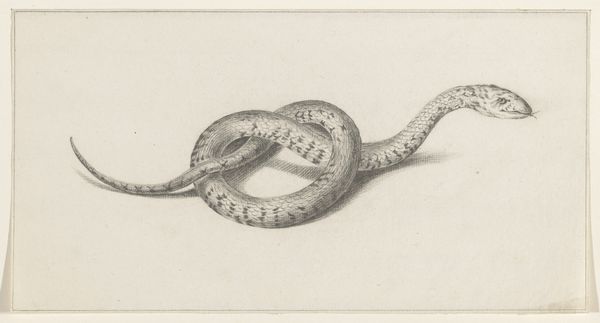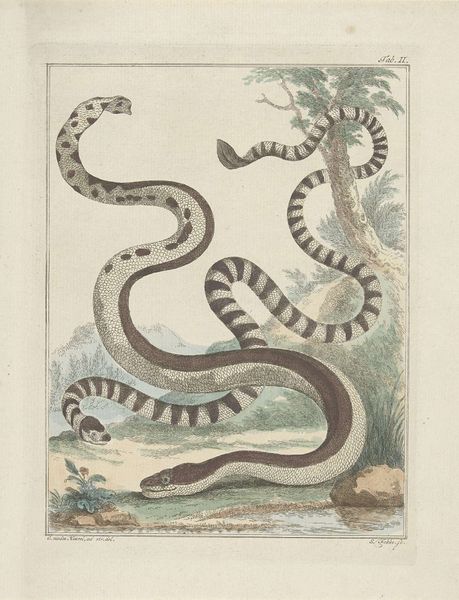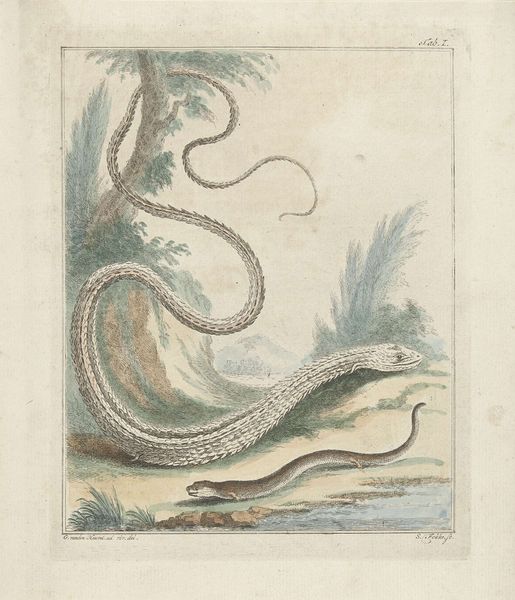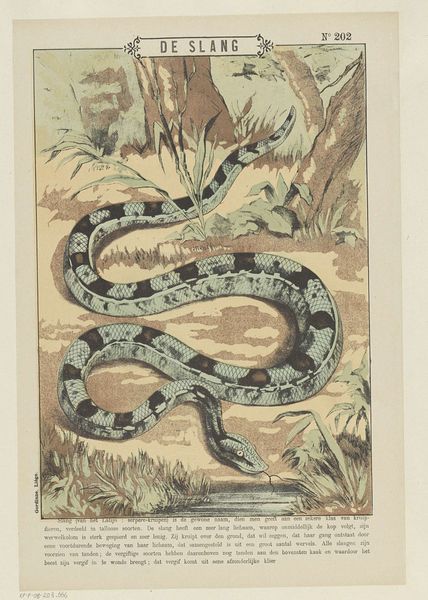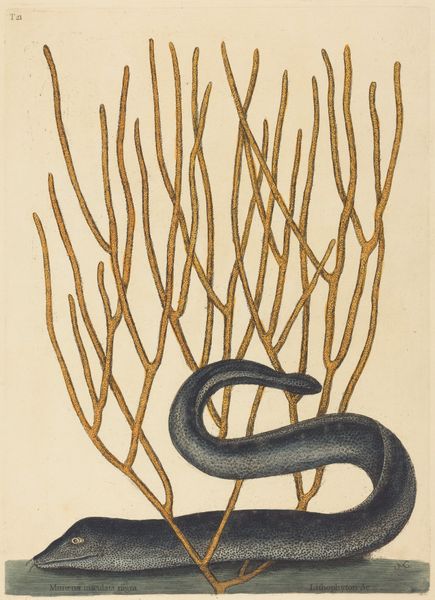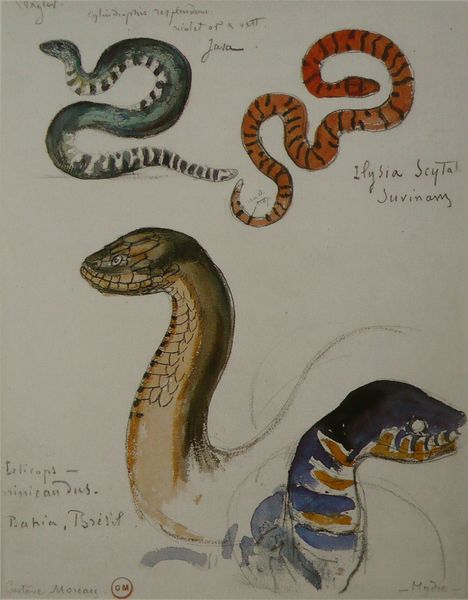
hand-colored-etching, coloured-pencil, print, etching, watercolor
#
hand-colored-etching
#
coloured-pencil
# print
#
etching
#
landscape
#
watercolor
#
coloured pencil
#
watercolour illustration
#
history-painting
Dimensions: 9 3/4 x 13 3/4 in. (24.77 x 34.93 cm) (sheet)
Copyright: Public Domain
Curator: So, here we have "The Wampum Snake," a hand-colored etching and watercolor print made sometime between 1731 and 1743 by Mark Catesby. Editor: Immediately, the vibrant, almost otherworldly blue of the snake against the stark background captures my attention. It feels like a heraldic symbol, potent and mysterious. Curator: It is rather striking, isn't it? Catesby was quite unique, documenting the flora and fauna of the American colonies, creating a sort of early natural history archive at a time of significant cultural encounter and colonial expansion. The focus was observation, but within a context of asserting European dominance over the land and its resources. Editor: Indeed, I notice the lily next to the snake. Its orange petals suggest vitality and beauty. It's fascinating how Catesby positions the natural world within a colonial gaze, using imagery and colour choices. The lily juxtaposed to the snake takes on deeper meanings when contextualized with historical views regarding sexuality. It also becomes obvious that snakes culturally mean different things. Curator: I appreciate how you are bringing into play these intersectional aspects. This work might act as more than a scientific documentation of the natural world, possibly symbolizing encounters between Indigenous populations and colonizers. The wampum snake itself is significant: wampum belts were historically used for treaties and communication, suggesting themes of negotiation, conflict, and cultural exchange. Editor: Right. Seeing this wampum pattern transformed onto a snake leads one to consider ideas about Indigenous diplomacy or sovereignty. Does the snake serve as an image of resistance, resilience, or perhaps caution in this historical context? It resonates through the ages. Curator: It gives a perspective through which to think about visual representation and power dynamics—how Catesby filters his understanding, deliberately or inadvertently. These considerations lead one toward ideas of historical ecology too, thinking how artistic practices impact modern narratives. Editor: Very true, the conversation could continue for hours! The artwork offers an open interpretation and serves as a mirror reflecting views past and present. I wonder about contemporary readings of Catesby's illustrations? Curator: Yes, a deeper exploration might benefit those today and create the discussions our institutions of culture have needed for centuries.
Comments
No comments
Be the first to comment and join the conversation on the ultimate creative platform.
